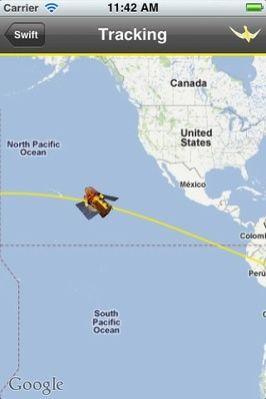New App for Amateur Astronomers, NASA Offers

NASA continued to roll out apps for astronomy enthusiasts to view pictures of far off worlds, get updates on missions and receive updates on the International Space Station.
Now, amateur astronomers can get the latest discoveries from NASA's Swift satellite that collects information about gamma-ray bursts.
The app also allows users to track, in real time, the location of Swift as it orbits the Earth, to see where Swift is pointed right now, and to view an informative gallery of beautiful images obtained by the Swift satellite.
We developed the iPhone app to be fun and informative, but also to be useful for both amateur and professional astronomers, said Jamie Kennea, science operations team leader for NASA's Swift Mission and a researcher at Penn State University. Kennea and Patrizia Caraveo, the director of the Italian Institute of Space Astrophysics in Milano, conceived of the project.
The app for the iPhone, iPod and iPad allow users to see data in real-time that scientists use to better understand the bursts of some of the highest energy known in the universe from explosive supernova.
The iPhone app was developed at the Swift Mission Operations Center near the Penn State University Park campus in Pennsylvania U.S.A. by a student from the University of Trento in Italy, Giacomo Saccardo. The NASA Swift app has four different features:
An interactive map of the world, showing Swift's current location in its orbit;
A list and a map showing the recently discovered gamma-ray-bursts, including optical images and data from all three of Swift's detectors;
A real-time, updated guide to Swift's current observations; and
A gallery of Swift-related images with full descriptions, compiled by Swift scientists.
NASA has a host of other available apps that give amateur astronomers virtual glimpses into the sun, space station crew and space images. Two apps are available for Android operating systems (space images and the central NASA app).
© Copyright IBTimes 2025. All rights reserved.





















